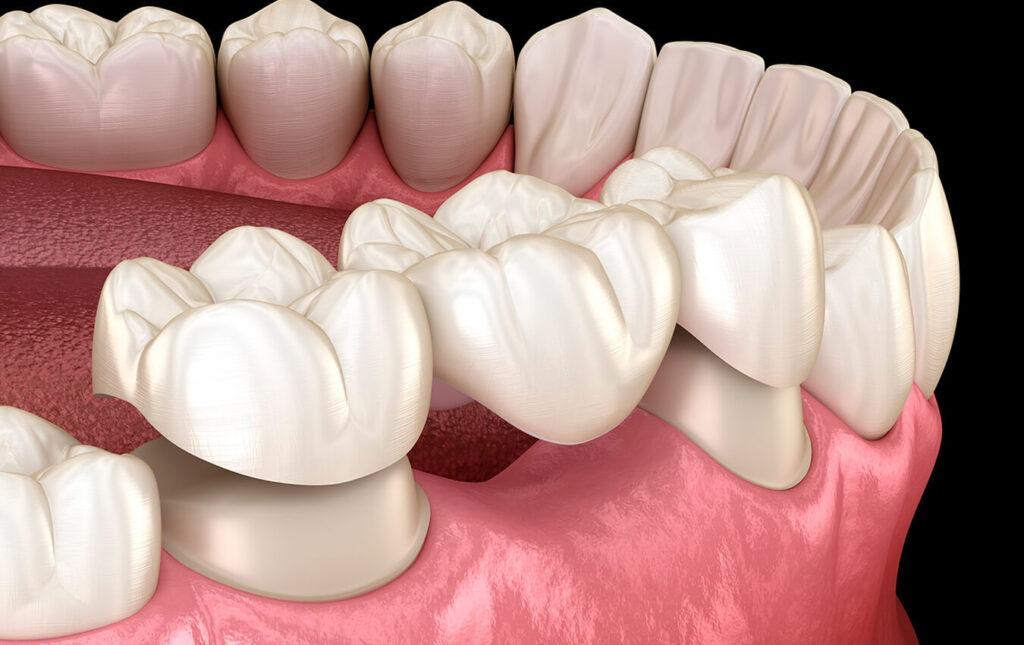
Bridges, or dental bridges, bridge the gap that is created by missing teeth. Any bridge is made up of 2 crowns for the teeth on both sides of the gap and a false tooth in between. False teeth can be made up of alloys, gold, porcelain or a combination of them.
Benefits
- Bridges restore the patient’s smile;
- They restore the ability to chew and speak properly;
- They evenly distribute the forces in the bite by replacing missing teeth;
- They prevent remaining teeth from moving out of position.
Who is this procedure for?
Everyone who has a missing tooth/missing teeth can have dental bridges. The success of the procedure depends on the oral hygiene of the patient – the more proper it is, the more successful the procedure.
Who should not consider this procedure?
- People who have uncontrolled type II diabetes are not advised to undergo this procedure, as the healing process that follows any type of surgical procedure is delayed because of poor peripheral blood circulation;
- There may also be certain restrictions related to the volume and height of bone availability.
What happens before the procedure?
During the initial visit the dentist prepares the teeth, starting with the recontouring of the teeth on the sides of the gap (abutment teeth). The recontouring consists of the removal of enamel from these teeth to allow room for the crown to be placed over them. After that, impressions of the teeth are made – they will serve as a model for the bridge. The dentist makes a temporary bridge for the patient to wear until the permanent one is being made; the permanent bridge is made at a dental laboratory.
What happens during the procedure?
During the second visit the dentist removes the temporary bridge and checks and adjusts the permanent one. In some cases several visits may be required in order to properly check the bite and the fit of the framework. When the bridge fits the dentist will temporarily cement it (for about two weeks) to make sure it is perfect. Only after a trial period the bridge is permanently cemented into place.
What happens after the procedure?
Bridges do not require special treatment. However, the dentist will instruct each patient to keep a good oral hygiene through daily brushing and flossing, as well as to select a balanced diet for proper nutrition.

